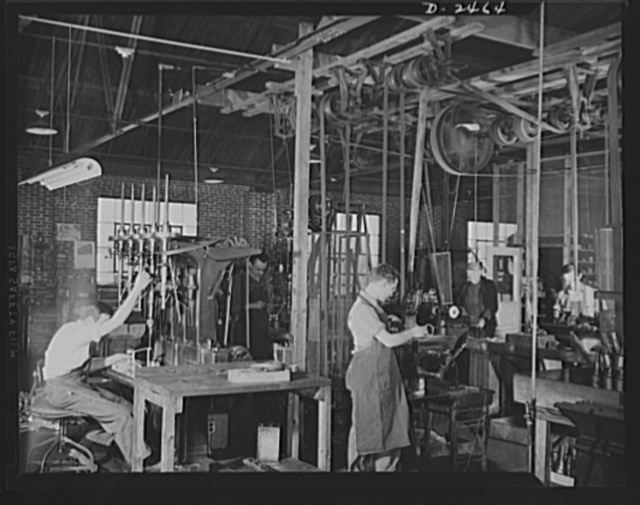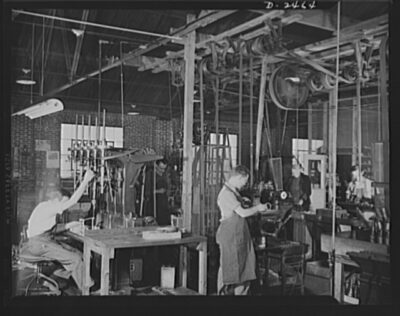- August 23, 2023
- Posted by: David Marshall
- Category: Digital Transformation, Innovation, Manufacturing

The modern manufacturing industry is undergoing seismic shifts, especially in the last decade. But adapting to these shifts isn’t optional — it’s critical if you’re going to survive and succeed.
So how do you navigate these changes without losing your way? How can a modern leader adapt to the changes in modern manufacturing? Do you need to become an expert in it, or is better to hire the experts who know this stuff much better than you ever could? (Hint: It’s the latter.)
Understand and Embrace Technology
 Modern manufacturing leaders have to keep up with advancements in technology. That doesn’t mean they need to be technicians themselves, people who can disassemble and reassemble a 3D printing blindfolded.
Modern manufacturing leaders have to keep up with advancements in technology. That doesn’t mean they need to be technicians themselves, people who can disassemble and reassemble a 3D printing blindfolded.
But understanding the basics is critical. If you’re the captain of the ship, you should at least know how to steer it. Otherwise, you could be sending thousands or millions of dollars into the ocean without a lifeline.
Ultimately, the technology you use (or don’t use) affects your outcomes. Whether it’s a 3D printer, robotics, or AI, the tech you adopt should provide a useful service and improve your overall efficiency.
But here’s the important part. If you’re going to invest in technology, don’t do it just to put your personal stamp on the department or the company. Digital transformation isn’t about your ego or making you look like a bigshot. It’s about creating efficiency and effectiveness, reducing waste, and increasing profits. Make sure your investments will actually solve a problem and not create new ones.
Continuous Learning and Adaptability
A modern manufacturing leader needs to always be learning. That means attending educational opportunities like seminars and conferences. Learn from the experiences, successes, and failures of others. This can help you avoid landmines experienced by the people who came before you.
You also have to be adaptable. Modern manufacturing does not have a one-size-fits-all approach. It’s like picking a new hat: what looks stylish on one person might look goofy on another. So understanding different manufacturing methods and technologies will help you find the best solution to the problems you’re facing.
Recognize Your Limits and Fill the Gaps
Leadership is a team sport, not a solo endeavor. You shouldn’t try to be the smartest person in the room, and you shouldn’t want to be. No one knows everything, and it’s okay to admit that. In fact, the better leaders are the ones who recognize they don’t know everything, and they instead rely on the experts to give them the best information.
Long gone are the days of the know-it-all leader whose ego was so fragile that he — and it was always a he — couldn’t be wrong, or even stand to be wrong. Entire companies have crumbled because of the egos of their leaders.
That means if you’re not good at technology, find the people who are. If you’re terrible at finances, get the experts who can read a spreadsheet the way the rest of us read a novel. This not only makes you a better leader, it makes your team that much stronger.
Keep an Eye on the ROI
Being an effective manufacturing leader is not just about understanding technology or people, it’s about understanding how those elements benefit (or harm) your supply chain in terms of dollars and cents.
Focusing on ROI ensures that every decision you make — from hiring your experts above to buying a new piece of equipment — has a clearly-defined purpose and will help the organization.
Final Thoughts
Modern manufacturing is exciting and interesting, but it can be hard to navigate. You need to understand your technology, but not the expert in the room. You need to be willing to learn and adapt. And you should understand your limitations while keeping an eye on your ROI.
Doing all of that is what it means to be a modern manufacturing leader, not just the person who signs the checks.
I’ve been a manufacturing executive, as well as a sales and marketing professional, for a few decades. Now I help companies turn around their own business, including pivoting within their industry. If you would like more information, please visit my website and connect with me on Twitter, Facebook, or LinkedIn.
Photo credit: Howard Hollem, Office of War Information (Picryl, Public Domain)

